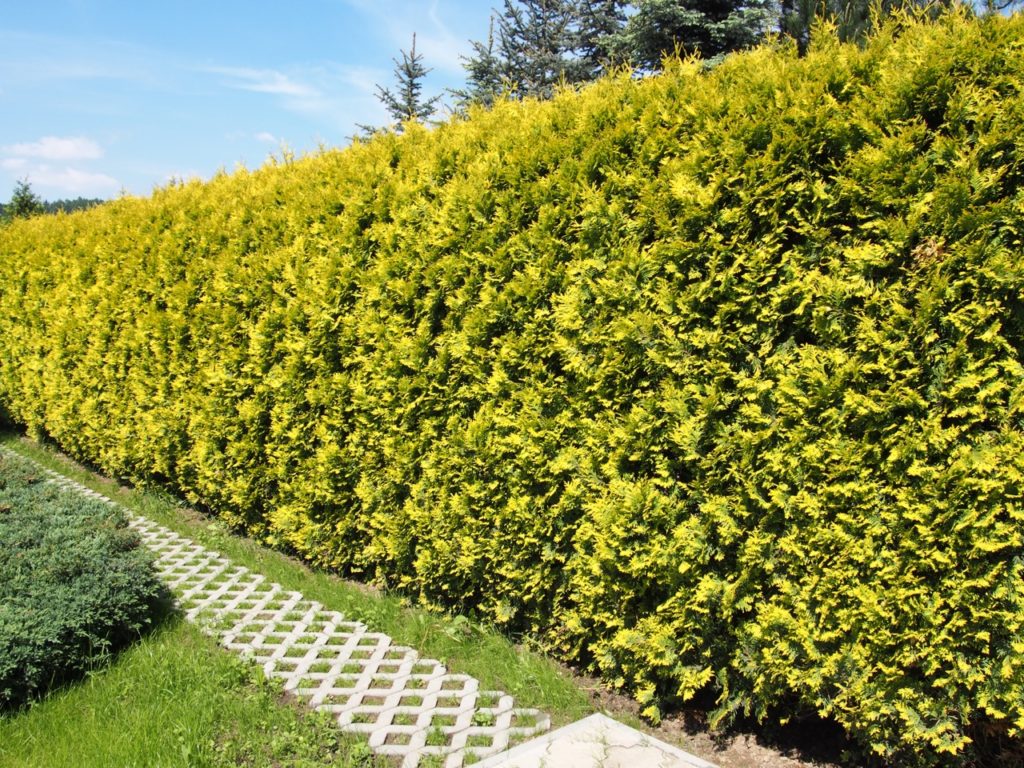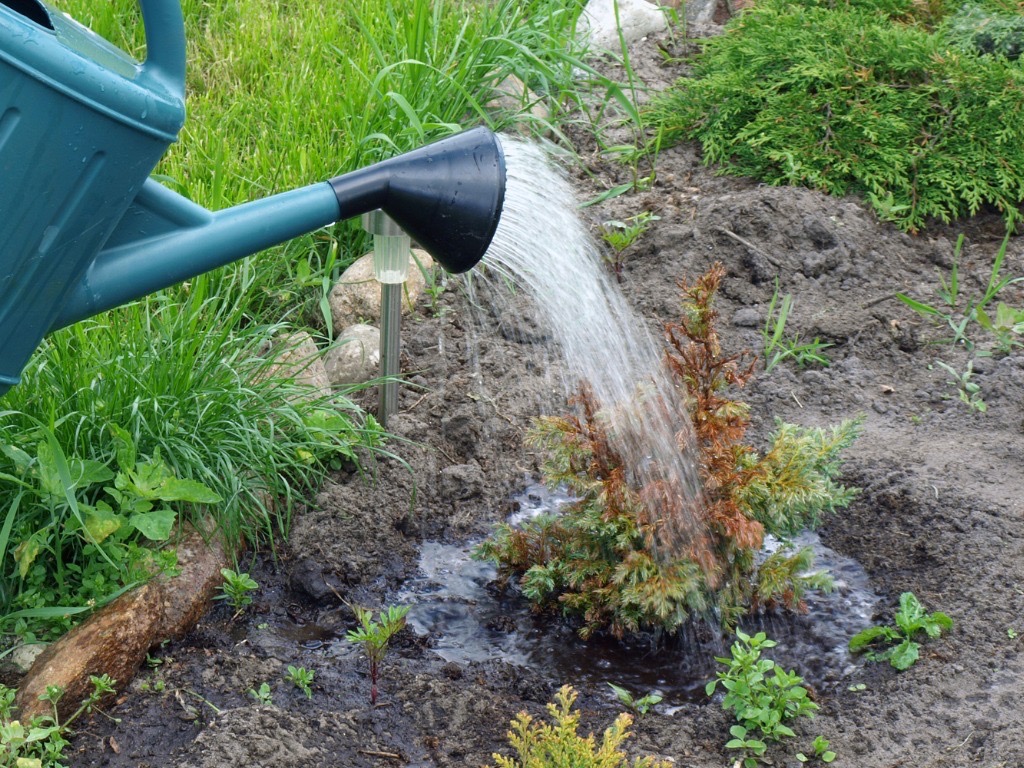TREES > ARBORVITAE

Elizabeth is a Permaculture Garden Designer, Sustainability Consultant and Professional Writer, working as an advocate for positive change. She graduated from the University of St. Andrews with an MA in English and Philosophy and obtained a Diploma in Applied Permaculture Design from the Permaculture Association.
Reviewed By COLIN SKELLY

Colin is a Horticulturist and Horticultural Consultant with experience in a range of practical and managerial roles across heritage, commercial and public horticulture. He holds the Royal Horticultural Society’s Master of Horticulture award and has a particular interest in horticultural ecology and naturalistic planting for habitat and climate resilience.
IN THIS GUIDE
ARBORVITAE GUIDES
Arborvitaes are well-known conifers and hedging plants which are used in many UK gardens – but are these the right option for you?
Overview
| Botanical Name | Thuja |
| Common Name(s) | Arborvitae / Tree of Life |
| Plant Type | Coniferous Tree |
| Native Area | North America and Eastern Asia |
| Hardiness Rating | H7 |
| Foliage | Evergreen |
| When To Plant | Spring or Autumn |
| When To Prune | Spring |
Sunlight
Preferred
Full Sun or Partial Shade
Exposure
Sheltered
Size
Height
1.5 – 4M
Spread
0.5 – 2.5M
Bloom Time
Late Spring / Early Summer
Soil
Preferred
Loam or clay
Moisture
Moist but well-drained
pH
Neutral or Alkaline
There are five species within the Thuja genus, all of which are widely grown as ornamental trees in many gardens around the world, and are commonly used as hedging plants.

Sometimes, other plants are also referred to as arborvitae, including a number of species which were formerly included in the Thuja genus.1The Editors of Encyclopaedia Britannica. (1998b, July 20). Arborvitae. Encyclopedia Britannica. Retrieved March 9, 2023, from https://www.britannica.com/plant/arborvitae
These include, for example, Platycladus orientalis, formerly known as Thuja orientalis.
This is a varied genus which can include a range of cultivars of different sizes and different appearances.
Some arborvitae can be towering trees that reach metres high, while others can be smallish shrubs suitable for container growing.
Is Arborvitae Right For Your Garden?
Arborvitae are varied plants which can work well in many gardens.
However, it is important to understand that some can grow extremely vigorously and plants that were not chosen with care may quickly outgrow their location.
As well as thinking about the needs of the plants themselves when choosing where to place them, you also need to make sure that you think about how large they will eventually grow and their habit and form.

Arborvitae can be useful for making privacy screens and hedgerows to shield unsightly views or provide a buffer against traffic noise or pollution.
They can provide year-round evergreen interest, and there are a number of interesting ornamental varieties to choose from.
These can ensure that a bed or border in your garden looks lush and attractive throughout the winter months.

Arborvitaes are all coniferous evergreens which are perfect for a low-maintenance scheme.
They are easy to cultivate and do not require a lot of care.
However, if growing arborvitae as hedging, the extra work involved in pruning and maintaining a neat hedge should be considered.
Common Varieties
Thujas which are grown in gardens in the UK are native to North America and Asia.
The two North American species are:
- T. occidentalis
- T. plicata

And two of the three Asian species are:
- T. koraiensis
- T. standishii
There’s also a hybrid between Thuja plicata and Thuja shandishii known as ‘Green Giant’.
T. occidentalis

T. occidentalis cultivars commonly grown in the UK include:
- ‘Amber Glow’
- ‘Danica’
- ‘Degroot’s Spire’
- ‘Emeraude’
- ‘Golden Tuffet’
- ‘Holmstrup’
- ‘Rheingold’
T. plicata

T. plicata cultivars include:
- ‘Atrovirens’
- ‘Aurea’
- ‘Goldy ‘4ever”
- ‘Irish Gold’
- ‘Stoneham Gold’
- ‘Whipcord’
- ‘Zebrina’
Where To Grow Thuja
Arborvitae can be grown as stand-alone specimen trees, in mixed borders, whilst a number of varieties are also commonly used to create hedgerows.
Wherever they are used within a garden design, they will thrive in full sun or in partial shade.
They can cope with most soil types but will do best in soil which is moist yet free-draining, and they are unfussy when it comes to soil pH.

Thujas are mostly H6 or H7 hardy, fully hardy in even the coldest and most northerly locations in the British Isles.
These trees and shrubs can vary broadly in their growth habit, size, form and appearance.
Larger options should be used only with caution and may not be suitable for smaller gardens, whilst many smaller arborvitae cultivars may even be grown in containers.
Where exactly arborvitaes are best planted will depend on which varieties you have chosen to grow.
How To Grow Thuja
Arborvitaes are best planted in spring, between March and May, or in the autumn between September and November.
While you can also plant out arborvitae through the summer months, it may be more difficult to get the plants to establish properly when the weather is warm and more dry.
Watering well during establishment is especially important if planting in summer.
Planting holes for arborvitae planted in the ground should be twice as wide and deep as the root ball to allow the roots to spread out easily as the plants become established.

Water in well and firm back the soil gently around the base of your new additions.
Upon planting in the ground, be sure to mulch well with plenty of organic matter, to retain moisture and to provide slow-release fertility for the plants.
Spacing, particularly for hedging, will very much depend on the variety or varieties of arborvitae that you have chosen.
Make sure that you understand the expected height and width of the options you have chosen in order to create a hedge without breaks which will not be too overcrowded.
Ongoing Care
As mentioned above, arborvitaes are low-maintenance plants which won’t require a lot of time and care, especially once established.
Watering
Arborvitae will usually need to be watered regularly over the summer as they become established.
However, when grown in the ground in the UK after this initial period, they should be happy with natural rainfall and you will likely only need to provide water during periods of drought.

If growing smaller cultivars in containers, you will need to water more frequently as containers are more liable to drying out.
Make sure you water well but ensure that the water can drain away relatively freely so that the conditions do not become waterlogged.
Feeding
Arborvitaes which are planted in relatively fertile soil and mulched with organic matter should not require additional feeding.

However, trees grown in containers may benefit from the occasional watering with a balanced, organic liquid feed over the period of active growth.
Pruning
Arborvitae grown as stand-alone specimens and in beds and borders will not usually require any pruning at all.
Many of them have well-formed slender pyramid shapes and should not be pruned, but if you are growing as a hedge, you will need to prune your arborvitae.
There are several different schools of thought about when to prune arborvitae hedges.
The first says that it is best to prune in late spring or early summer, usually in May or June, to remove any winter damage and prune for shape as new growth starts to appear.
The problem with this is that you may disturb nesting birds.

The second school of thought says that it is best to prune in late summer or early autumn, at the tail end of the hedge’s growing season, which helps retain a shape which can shed snowfall easily and is less likely to disturb native birds.
Some gardeners combine both ideas and prune twice yearly, once early in the summer and then again in late summer or early autumn to tidy things up after summer growth.
As long as nesting birds are not disturbed and you have the time, then I’d suggest that this gives the best overall effect.
Whenever you decide to prune, arborvitae hedges will need pruning to keep them in check.

“Make sure you have sufficient space when using Thuja for hedging,” shares Colin Skelly, a recipient of the Master of Horticulture title from the RHS.
“Unless the plant is regularly cut back (which diminishes its status as a low maintenance option), it will have a tendency to put on more growth.
“Eventually, this will lead to needing to cut back into brown woody areas, which won’t grow back.”
Just remember that you should only ever cut green growth and not cut into the brown woody part, as this will not grow back.
Propagation
If you wish to propagate new arborvitae to extend a hedge, perhaps, or create specimens to plant elsewhere in your garden, you can do so by taking semi-hardwood cuttings in late summer or early autumn.
Introducing arborvitae into your garden does involve careful thought and it is very important to choose a variety that is suited to its growing location and your needs.
But, if you do decide to introduce this type of coniferous tree to your garden, then it can be a useful and low-maintenance addition.
References
- 1The Editors of Encyclopaedia Britannica. (1998b, July 20). Arborvitae. Encyclopedia Britannica. Retrieved March 9, 2023, from https://www.britannica.com/plant/arborvitae

